18 October 2023 – Upon arriving at our destination in Brickfields, Malaysian Association for the Blind (MAB), in the morning, we (IMU Nursing students) were impressed with the facilities that greeted us. Tactile paving lined the ground, accompanied by installations of handrails to facilitate easy navigation for the blind. Additionally, we observed remarkable sights such as braille vending machines and other assistive facilities for the blind, including braille display computers used by the blind staff.
We were warmly greeted by the staff, who informed us that the team at MAB consists of 40% visually impaired individuals and 60% non-visually impaired individuals. A briefing about the facilities and services of the Malaysian Association for the Blind was given by the respected Dr. Lim Tien Hong, who is blind himself. He lost his vision in an accident when he was 10 years old, but this limitation did not hinder his pursuit of a PhD in Economics at Universiti Sains Malaysia.
Visually impaired individuals there include adults who are blind from birth, those with low vision, individuals who are legally blind, and those with total blindness. They are provided with an array of facilities and services such as education, food, accommodation, assistance to seek medical care as well as a library of braille books for adult and children alike for the blind community. However, these individuals need a referral from Jabatan Kebajikan Masyarakat prior to their enrollment in MAB.
Sensory Garden
A sensory garden was built in the midst of the building that contributed to the serenity of the establishment. The design of the sensory garden revolved around the sense of smell, sound, touch, and taste that are enhanced in the visually impaired community.
Plants that are safe to touch, scented and edible were planted. These plants attract animals such as birds that chirp and insects, adding to the sense of sound. The visually impaired are encouraged and taught gardening as a skill and hobby to improve mental stimulation and create a sustainable source of spices and vegetables. Crops planted include basil leaves, curry leaves, cilantro, and others
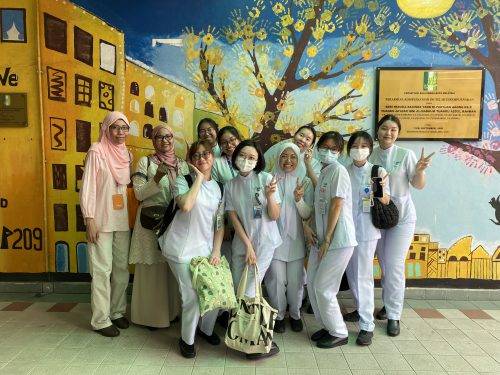
Braille Publishing Unit
During the tour of the facilities, we visited the Braille Publishing Unit, also known as the embossing room, where embossed and braille books are published for blind children’s education.
Embossed books allow children with visual impairment to learn through the sense of touch by comprehending the lines, curvature, and textures of embossed surfaces on the pages of the books.
We saw how the books were embossed; we even had the opportunity to try embossing the pages ourselves under the guidance and supervision of the staff. The books they were printing include textbooks for primary and secondary school students that consist of subjects like chemistry, mathematics, science, accounting, and others.
The facilities in the embossing room such as the embosser for thermoforming, braille papers are sourced from the United States. We learn that the thermoform machine works by heating, pressurizing or vacuum-forming the page of plastic sheet material to make it pliable therefore forming texture on the page.
Vocational Training
In addition to education, we observed how services such as reflexology and massages were taught to the blind. They can leverage their knowledge and sense of touch gained in reflexology and massages as a pathway in their career by offering these services to others.
Teaching, certification, and exams were held to enhance their skills in this area. The reflexology teacher explained that reflexology is the stimulation of pressure points using only the reflexologist’s hands, specifically the fingertips on the feet to release stress and promote healing while massage is the kneading of muscles on the body such as the back to relax muscles using the masseuse’s palms, fingers, and elbows.
Other than that, courses involving computer systems and information systems are available for the blind to learn and pursue, potentially excelling in this field. Additionally, they train the blind to operate call centers using customised outbound or inbound operating software to handle customer inquiries and such.
The multitude of vocational training and education they provide to the visually impaired enables them to contribute to society as part of the workforce and economy, ultimately raising their quality of life.
Library
Their library consists of braille and tactile books of different genres that cater to individuals with varying visual and intellectual capabilities.
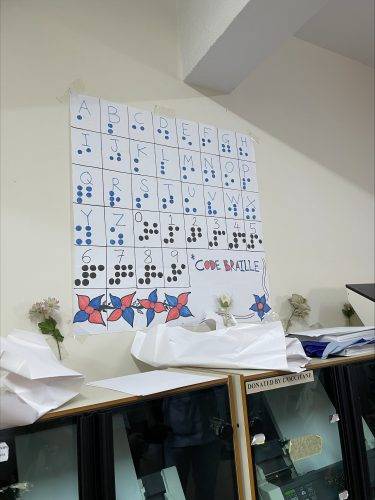
A children’s room, which includes sensory toys and braille children’s books, has been built in the library.
The librarian there taught us how they use braille to read and type and it was an immersive experience. A braille cell is made up of 6 dots, arranged in 2 columns of 3 dots in each column. Each braille letter, such as a number or alphabet, represents a unique combination of dots in a braille cell. A series of these combinations of braille cells form words, and therefore sentences.
There’s a recording room in the library for the blind to record audio books as well to encourage the visually impaired to use their sense of hearing to read and record literatures. The visually impaired have a heightened sense of hearing and can be directed to learning through audio methods.
What did the Students Gain From This Visit?
The students learned to relate the content of lectures about the visually impaired in the classroom to practical experience. During the lectures, we learn about the anatomy of the eye, how Braille aids the visually impaired and how to care for visually impaired patients. Through this visit to MAB, our learning expanded multiple folds by speaking to the visually impaired, learning the perception of their lifestyle. The empathy and emotional aspect of caring for visually impaired patients is enhanced which helped nursing students in their nursing care as well as the understanding of their studies about eye conditions.
In conclusion, we were all humbled by our experience and inspired by MAB, and the purpose of our visit to MAB was fulfilled. Undoubtedly, the skills that the visually impaired can acquire through their learning in MAB are impactful. As we left our memories and donations, we bid them farewell while aspiring to contribute and give back to society through our endeavors. We learn that our limitations do not define us but our courage and grit to persist through hardships do.
Written by Chin Buey Lynn




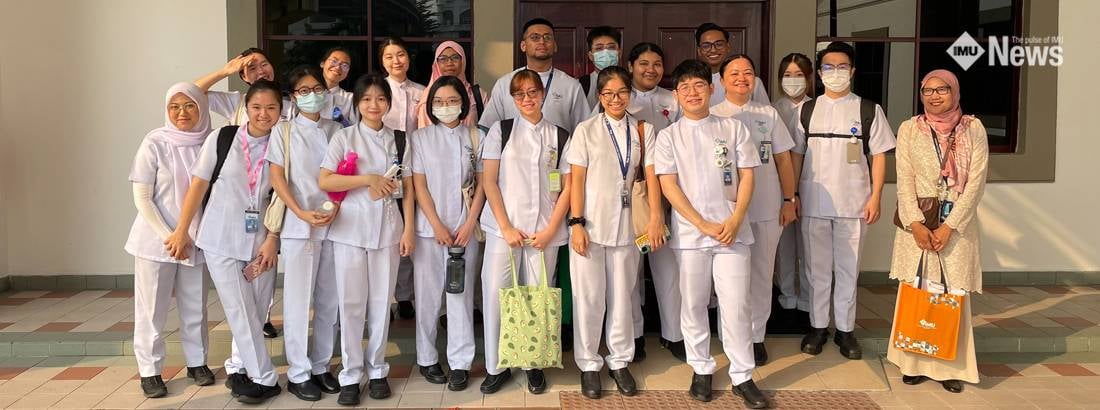
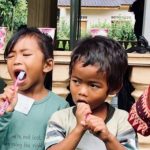

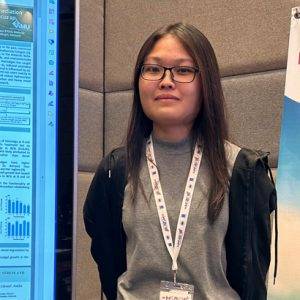
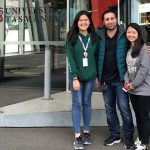
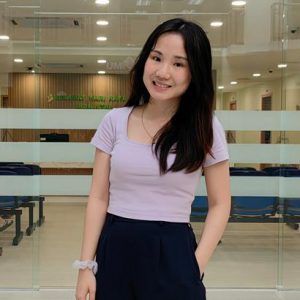
Nicholas Low Chia Soon
This is such an informative article and its great to see our future nurses experiencing it first hand !